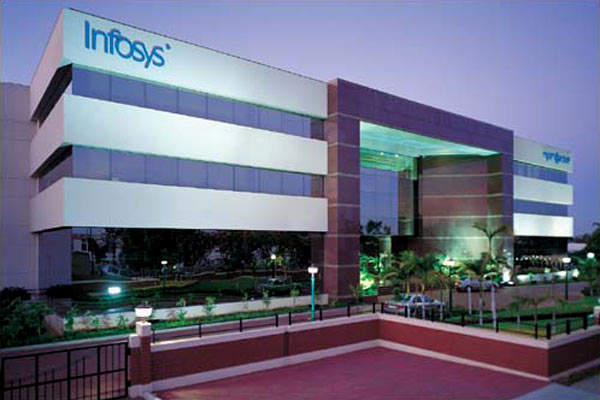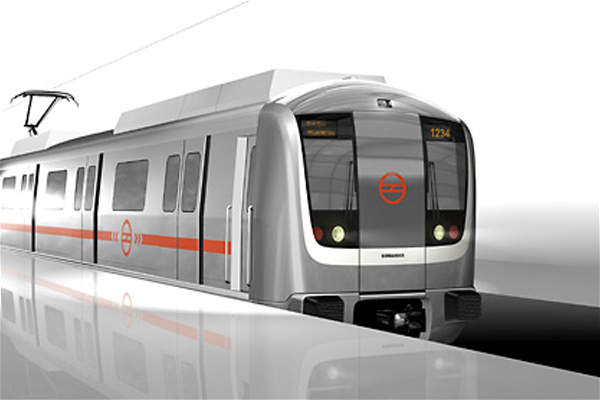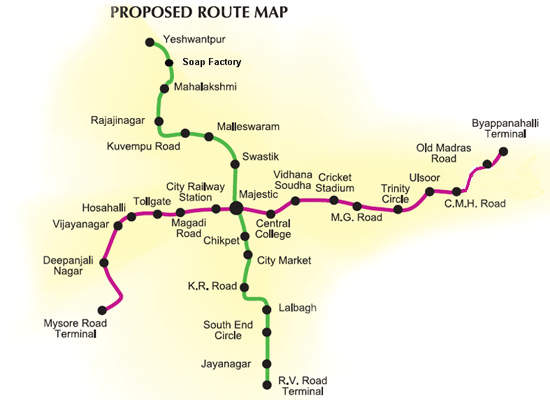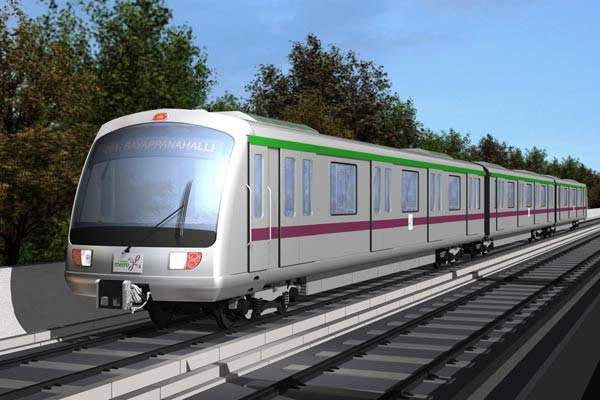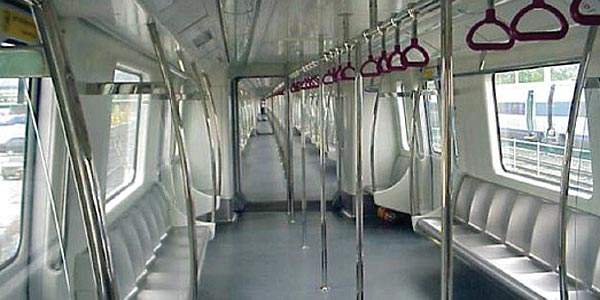Bangalore (also Bengaluru) in the south west of India is the country’s fastest-growing metropolitan area. It seems to set to confirm a place as the third-largest city with a population of well over five million and with more in surrounding satellite communities. The state capital of Karnataka, Bangalore is a leading research centre with a concentration of the international information technology industry.
An important location for Indian Railways, Bangalore’s urban transport has been made up of taxis, buses and lightweight powered rickshaws. Coupled with the need to sustain the city’s growth, the social and economic transformation has focused official attention on developing rapid high-volume rail-based public transport.
The project
Although mass transit for Bangalore had been considered for over two decades before the current project, final approval on a scheme that incorporated the expertise of Delhi Metro Rail Corporation (DMRC) and the Indian Government-owned RITES infrastructure and transport consultancy did not come until April 2006. The rationale for the metro includes reduced journey times, cutting fuel use, accident reduction and lower pollution. Construction on the system now designated Namma (Our) Metro started a few months after a ceremonial launch by the Indian Prime Minister in June 2006.
Subsequent to the start of the project, the Bangalore Metropolitan Land Transport Authority (BMLTA) was established under the National Urban Transport Policy of 2006 for better planning and greater coordination of moving people around cities with populations in excess of one million. Obligations of the BMLTA that will embrace the metro include overseeing transport projects, assisting the creation of a regulatory framework and to encourage a common ticketing system.
Namma Metro is being developed by the specially formed Bangalore Metropolitan Rail Corporation Ltd. Project funding combines debt and equity interests, with external finance from the Japanese Bank for International Cooperation as well as national and Karnataka state governments. In addition to RITES and DMRC, France-based Systra is also contracted between 2007 and 2012 for project management in Bangalore, their third Indian metro contract following Delhi and Mumbai.
Infrastructure
Around 88% of the space needed for the metro was already in public ownership, although opposition in respect of access to the remainder has affected the project. The first phase of Namma Metro is for two double-track 1,435mm lines with an intersection at Majestic: 24.2km (15 miles) on a north-south axis and 18.1km (11.2 miles) running east-west. The power for the system will be 750V DC bottom contact third-rail supply.
With the system entirely grade separated, tracks and stations will mainly be elevated. The two lines will use a total of 8.8km (5.4 miles) of tunnels in the central district. A depot and maintenance facilities will be at Baiyappanahalli, terminus of the east-west line. Yeshwanthpur has been cited as a likely location of the north-south line.
With 30-second station dwell times, journey times over each line are 33 minutes (east-west) and 28 minutes (north-south). Construction contracts are according to the division of the work on the routes into four ‘Reaches’.
Rolling stock
The specification for rolling stock is based on stainless steel-bodied three-car formations, a trailer between two motored driving units. Internal wide gangways will provide ease of passenger movement and assist load distribution. Trains will be air-conditioned throughout with designated space for disability access. Although with many automated functions, trains will be under driver control.
Capacity per train will be approximately 1,000 through longitudinal seating, giving a high proportion of the floor area to standing passengers.
Maximum speed will be 80km/m (50mph). From an initial shortlist also including Bombardier and Siemens, Alstom Projects India Ltd and Indian company BEML in a consortium with Mitsubishi and Rotem became the finalists in the competition to supply the Phase 1 fleet is of 39 units, the contract for which will also include a training element.
Signalling and communications
Fares are likely to be pitched about 1.5 times that of equivalent bus routes, although there is an intention to amend bus services to a feeder role to the much higher capacity of the metro. The system’s control centre will have direct communication with trains and stations which will also be CCTV fitted with visual and audio service information.
Trains will be Wi-Fi enabled and passengers will have emergency voice communication with train staff.
Initial peak frequency will be three minutes with the capability of reduction to two minutes. Five pre-qualified bidders have been announced for signalling and communications systems.
The future
In mid-2008 the Namma Metro project was reported as running nine months behind schedule. Revenue services on phase 1 lines are expected to start throughout 2011; the first of these, between Baiyappanahalli and M G Road, opened in April 2011.
Plans exist for around 60km (37 miles) of monorail lines to act as feeders to Namma Metro.
In a free-standing project, a special company has been set up for the creation of a 34km (21 mile) long rapid rail connection with the Bengaluru International Airport opened in May 2008. With DMRC in a consultancy role, a second phase of metro development is planned, which would add up to 64km by extending the original routes and creating new lines.

